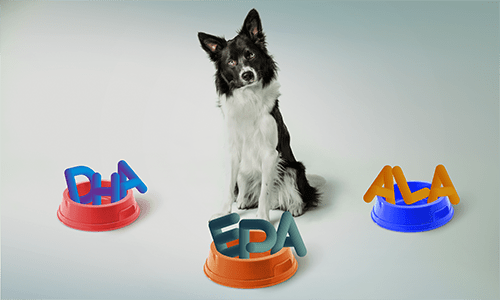

Your region has been set to
Change region
Close


Your region has been set to
Change region
Close



June 10 2021 - News

Many pet food manufacturers with whom I speak are increasingly interested in functional ingredients to meet market demand for healthy and nutritious pet food. Omega-3 fatty acids are an excellent example of a pet food ingredient that can be beneficial to cats and dogs of all ages, including those with specific health conditions, if used correctly. In order to make a true functional health claim, you must ensure that you use the right omega-3 source, in the right amounts, and in the right combination within the pet food formula.
Omega-3 fatty acids play an essential role in the physiological processes of mammals, such as cats and dogs, and have many additional health benefits. They increase the absorption of vitamins and minerals, stimulate hormone production, ensure healthy growth and development, and help to manage inflammatory problems in the prevention and treatment of diseases. More specifically, the intake of omega-3 fatty acids is reported to have a positive influence on joints, skin/coat, heart, eyes, and brain function. Achieving these benefits first of all depends on using the right types of omega-3 fatty acids.
There are three types of omega-3 fatty acids involved in the physiology of mammals: the short-chain alpha-linolenic acid (ALA) and the long-chain eicosapentaenoic acid (EPA) and docosahexaenoic acid (DHA). Since cats and dogs are unable to synthesize any of the essential omega-3 fatty acids, they must be obtained through diet. A common yet crucial misunderstanding is that all three are equally beneficial. In actual fact, ALA first needs to be converted in the body into EPA and then into DHA to achieve any health benefits. This only happens at a very low conversion rate. To achieve full health benefits, pet food therefore needs certain inclusion levels of EPA and DHA. Realizing this requires careful consideration of ingredients.
Of the different omega-3 fatty acids, the short-chain ALA fatty acid is most common and is found mainly in vegetable oils, such as flax oil, soya oil, and canola oil. Use of these ingredients, however, yields very low functional amounts of the beneficial long-chain EPA and DHA fatty acids. Furthermore, many vegetable oils are rich in omega-6. Especially when combined with commonly used poultry ingredients, this can result in pet food with an imbalance between the amounts of omega-6 and omega-3. High amounts of omega-6 may cause inflammatory health problems. Making a functional health claim for omega-3 can therefore only be realized by adding EPA and DHA to pet food directly.
EPA and DHA are mostly found in marine oils and algae. Of the different marine oils, farmed salmon oil averages only 3% EPA and 4% DHA compared to 9% EPA and 11% DHA in wild salmon oil. At IQI, we also supply refined and deodorized fish oil, made from different species of fish, which averages around 18% EPA and 12% DHA. The supply of fish oil is already exceeded by increasing global demand, however, causing prices to fluctuate. A very good alternative is our MSC-certified full-fat krill meal, which contains 24% omega-3 fatty acids of which 21% is EPA and DHA. Both krill and different species of fish actually accumulate their omega-3 reserves by consuming microalgae. IQI’s algae DHA, made from cultured microalgae, actually has a minimum DHA content of 28%, making it the most effective, efficient, economical, and sustainable source of long-chain omega-3 fatty acids to meet increasing global demand.
Careful consideration of these aspects will ensure that pets of all ages, from puppies and kittens to our most senior four-legged companions, can enjoy good health. Older pets develop different needs or may start suffering from health conditions that need special care and attention. The intake of long-chain omega-3 fatty acids, for example, supports aging brains, enhances joint health in older dogs, improves clinical symptoms in cats and dogs with osteoarthritis, and reduces the severity of cachexia in cats and dogs. Since the life expectancy of our pets is increasing, senior pet nutrition is becoming an increasingly important area of expertise – so stay tuned for my new blog and white paper on this specialized subject!
Meanwhile, if you are interested in more in-depth information on the benefits of using different omega-3 sources in your pet food formula, take a look at the white papers already available from IQI:
Geert van der Velden is IQI Trusted Petfood Ingredients’ Innovation Manager responsible for Business Development, generating new products and concepts that meet the needs of existing and new customers. Geert has more than 25 years’ experience in the international pet food industry and has gained knowledge and experience in many sections of IQI’s business.